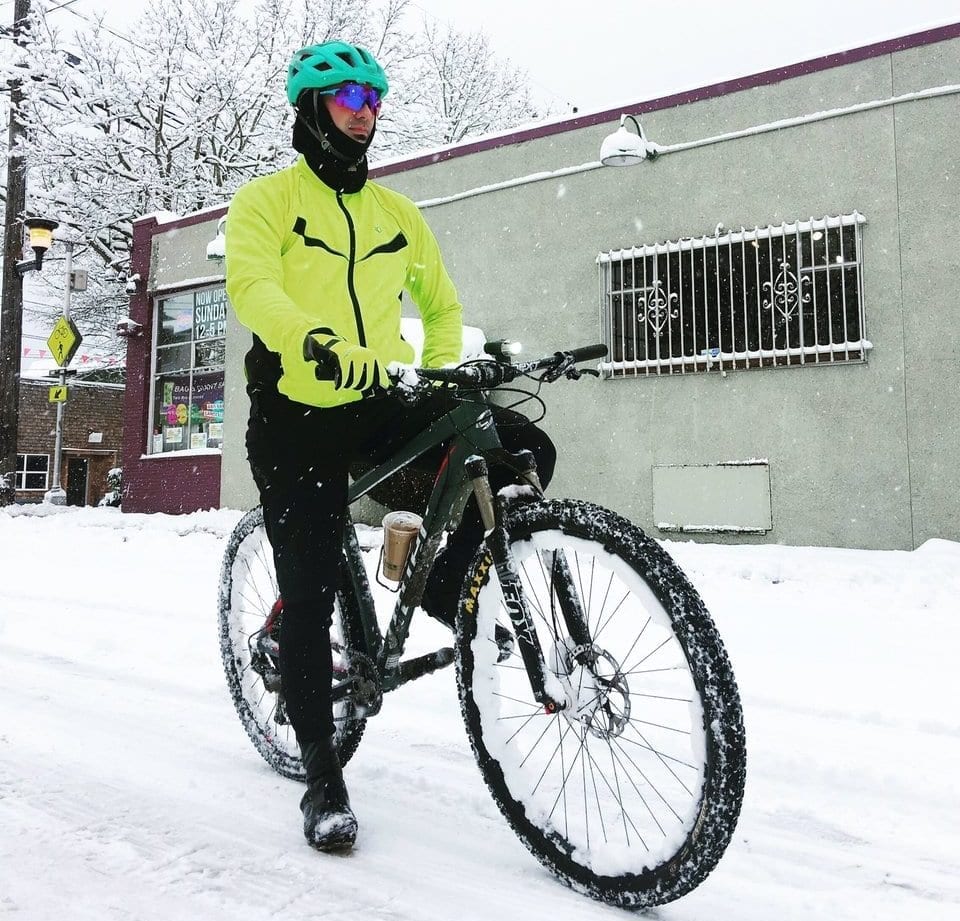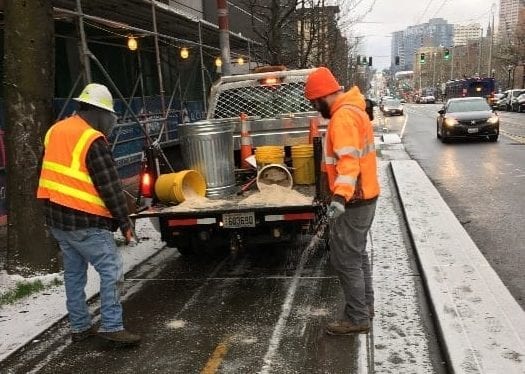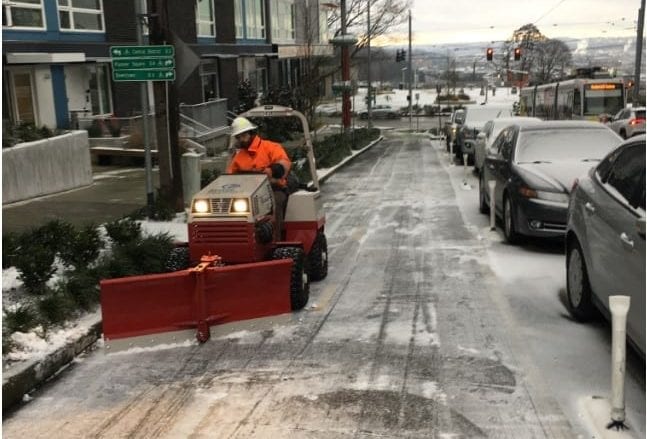
While bicycle traffic goes down when it snows, there were still many riders who got around on their two wheels this week.
The Fremont Bridge Counter recorded a total of 1,167 bicycles on Monday, January 13th! That’s down 59% from the Monday prior with 2,845 bicycles over the bridge, but that’s still a lot of people braving the cold and snow on bike.
If you decide to bike next time it snows, please dress for the weather with reflective clothes, lights and a helmet, make sure your bike is tuned and equipped to handle inclement weather, ride slowly and use extra caution. Road conditions can change at any time. Remember that drivers may also be navigating unfamiliar road conditions.
We’re working to help people get around by bike when it snows.
One thing that we’re doing differently this year is we now have a designated team for treating and clearing protected bike lanes along with a separate team to treat and clear curb ramps and pedestrian paths on overpasses.
On Monday, January 13, 2020, we were able to inspect, treat, & spot clear 46.82 miles of protected bike lane.
In some cases, we re-treated the same lanes multiple times for very heavily used bike routes like the 2nd Ave protected bike lane.
Our crews focused on protected bike lanes in the Central Business District, Capitol Hill, and Westlake. We have smaller plows for the bike lanes, but much of the work this week was done by hand where snow depth wasn’t enough for motorized vehicles. We continue to inspect, treat, and clear protected bicycle lanes as-needed, between the hours of 7 AM and 7 PM during snow and icy conditions.
We’re not able to clear most of our neighborhood greenway routes because by design, their routes are narrow & have roundabouts & speed bumps to keep car traffic to a minimum.
Unfortunately, these features that increase the bike-ability of these roads the majority of the year, prevent snow plows from accessing the roads. Thank you for being patient and finding alternative routes.
Plan your bike commute in the snow.
Know which roads have been recently plowed and treated on our Winter Weather Response map. Our snow plows push snow to the right. In some cases this means more snow is in bike lanes before the plows are able to do another pass at the road and move snow completely to the side.
Use caution & know your comfort level.
If you don’t feel comfortable biking in the snow, choose an alternative option. You can bus, walk, light rail, or maybe even cozy up at home. You can hop back on your bike next week when temperatures are forecasted to be in the 40s with typical Seattle winter rain.
If you’re one of the brave who choose to bike in the snow, dress for the weather with warm layers, reflective clothes, lights and a helmet, pay attention to road conditions, ride slowly and use extra caution, and turn around if you realize conditions are beyond your comfort level. And have fun!
More resources:
- Check which roads have been cleared of snow and ice on our winter weather response map.
- Read our winter weather FAQs – all of the answers you’ve been waiting for on snow & ice response!
- Don’t miss our winter weather resources & related websites.
- Visit King County Metro’s Metro Winter webpage: prepare for bus routes in winter weather.
- Read our recent winter weather blog posts for more helpful info.


